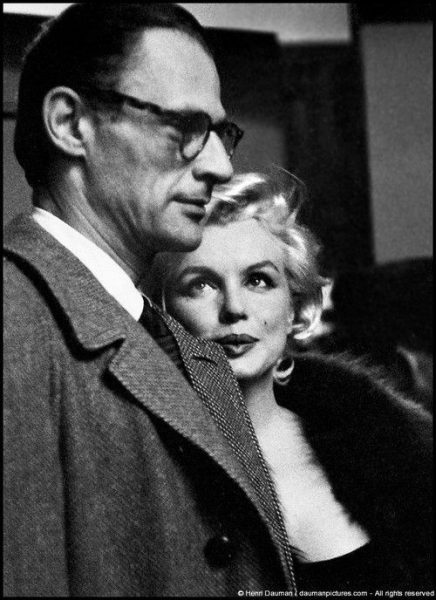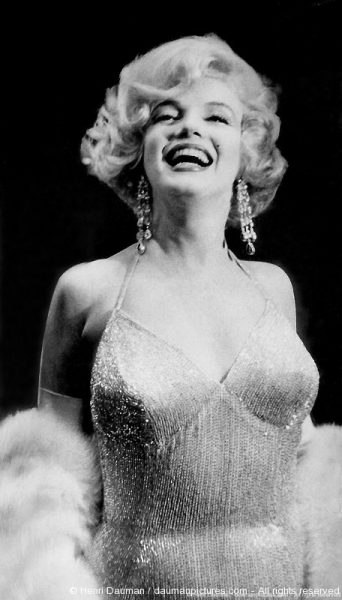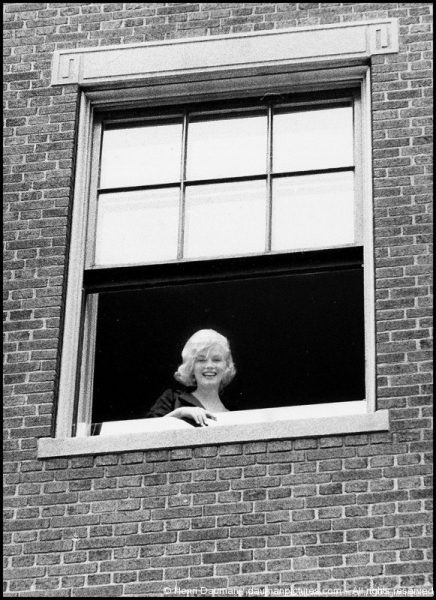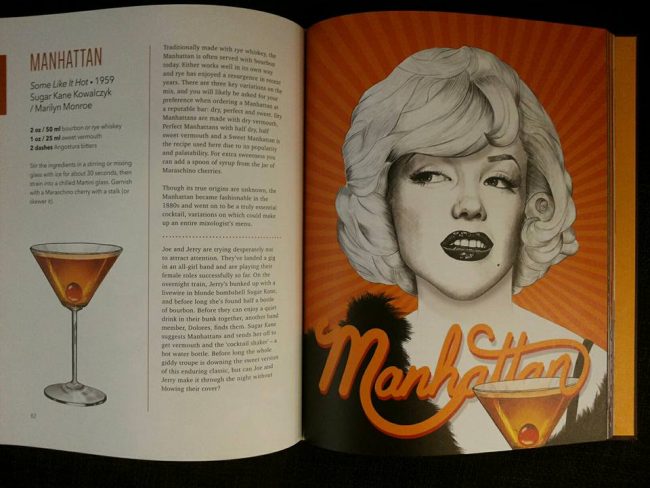
The Manhattan cocktail, so beloved of Sugar Kane in Some Like it Hot, is featured in a new book by Will Francis and Stacey Marsh, Cocktails of the Movies: An Illustrated Guide to Cinematic Mixology.
Thanks to Tony at Immortal Marilyn
Marilyn Monroe 1926-1962

The Manhattan cocktail, so beloved of Sugar Kane in Some Like it Hot, is featured in a new book by Will Francis and Stacey Marsh, Cocktails of the Movies: An Illustrated Guide to Cinematic Mixology.
Thanks to Tony at Immortal Marilyn
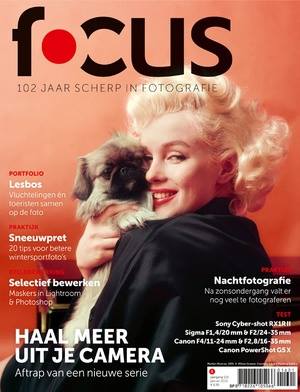
Milton Greene’s 1955 portrait of Marilyn – posing with a girl’s best friend, her dog – graces the January 2016 cover of Focus, a Dutch photography magazine. Inside is a short item about Marilyn Monroe: The Woman Who Made Love to the Camera, an exhibition of images by Greene and Douglas Kirkland, on display at the Eduard Planting Gallery in Amsterdam from January 9-March 5.
Thanks to Sacha and Johann at Immortal Marilyn
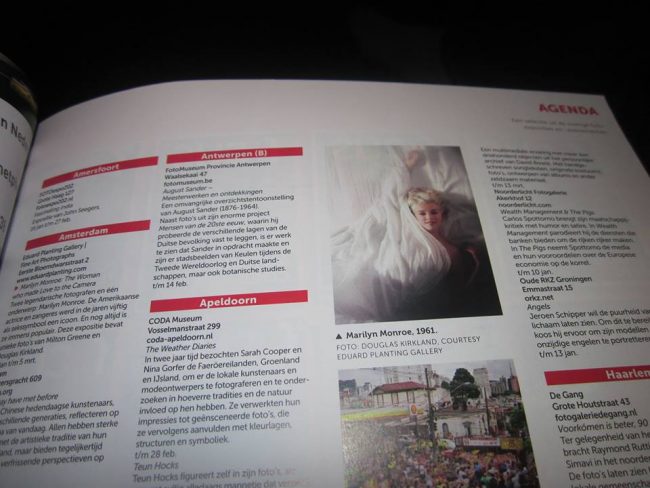
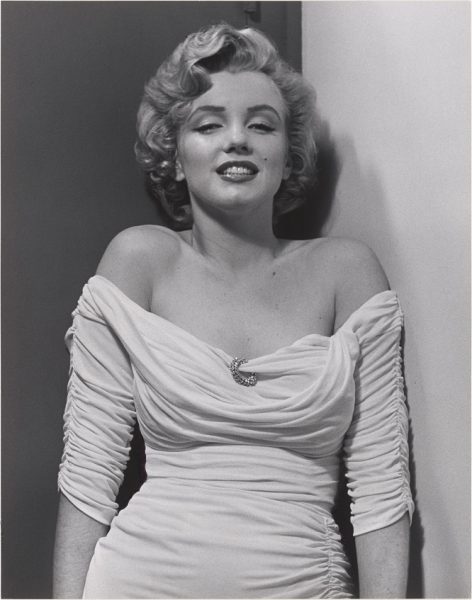
Philippe Halsman’s most iconic photo of Marilyn – chosen for her first Life magazine cover in 1952 – has won a Smithsonian Magazine readers’ poll, and will be displayed in the National Portrait Gallery, Washington, from January-March 2016.
“A portrait of Marilyn Monroe will be installed in the Smithsonian National Portrait Gallery’s ‘Recognize’ space, Jan. 22, 2016. The museum’s historians and curators selected three actresses’ portraits for voters to choose from—Rita Hayworth, Marilyn Monroe and Mae West—three fan favorites who, despite long acting careers, never received Oscar nominations.
Thousands of votes were cast on Smithsonianmag.com, and Monroe’s portrait received the most votes. Philippe Halsman’s photograph of her will be on view on the ‘Recognize’ wall, near the north entrance of the museum, through March 6, 2016.
Last year, the Portrait Gallery created ‘Recognize’ as an opportunity for people to select what they would like to see on display. Twice a year, the museum presents three portraits, and the public votes for their favorite. In the last round of ‘Recognize,’ voters elected to display a portrait of the baseball Hall of Famer Roberto Clemente by Charles ‘Teenie’ Harris.”

The actress and Marilyn impersonator Paula Lane passed away in August this year, reports the Telegraph. Born in the same year as her idol, she played a bit part in What a Way to Go! (1964), in which Shirley MacLaine replaced MM. Some 25 years later, Lane starred in Goodnight, Sweet Marilyn (1989), a sequel to the 1976 exploitation movie, Goodbye, Norma Jean – alongside another lookalike, Misty Rowe, who reprised her role as the younger Marilyn.
With a low rating of 2.9 on IMDB, Goodnight, Sweet Marilyn is (perhaps too generously) described by one user as ‘offbeat, absorbing, but ultimately redundant.’
“In 1989 she appeared in Goodnight, Sweet Marilyn, a film which the director Larry Buchanan claimed would show what really happened on August 5 1962, when the star was found dead in her Bel-Air home of an overdose. ‘I play Marilyn at 36,’ said the by then 53 year-old lookalike. ‘It took a little doing, but I think I pulled it off.’
The critics were not so sure, one describing the film as ‘maybe the sleaziest movie of 1989, a perfect 100 on the Sleaze Meter’. Paula Lane, however, he suggested, should be given a ‘Drive-In Academy Award nomination’ for saying, ‘Do they have cameras in heaven?’
One Hollywood columnist described Paula Lane as ‘the girl most men would like to be stranded on a desert island with’. But by the 1970s acting and modelling work was proving irregular, so on the advice of an agent who suggested that she exploit her resemblance to Marilyn Monroe, she put together a song-and-dance act and took off on a three-week gig in Tokyo.
She had met the star on three occasions and as she recalled, ‘studied her every move, every gesture, every notion’. When she heard the news of her death on the radio, ‘I went to church to visit my priest. I needed answers. When my grief subsided and a couple of days later I stood in front of my bathroom mirror and felt this incredible force as if Marilyn was looking back at me. It was as if she had moulded herself in to my body! I started to cry. I hadn’t realised before just how much I looked like Marilyn. I was her.’
From the 1970s onwards Paula Lane performed as Marilyn Monroe in clubs from California to Las Vegas. Calling her act ‘The Super Star Award Show,’ she sang songs which Marilyn Monroe had made famous, including Diamonds are a Girl’s Best Friend and Heat Wave, and recreated the classic shot from The Seven Year Itch of Marilyn Monroe’s dress blowing up around her legs as she stands over a subway grating. To ‘do’ Marilyn, Paula Lane claimed, was ‘like a fix. To go out for a Marilyn job is an upper.'”
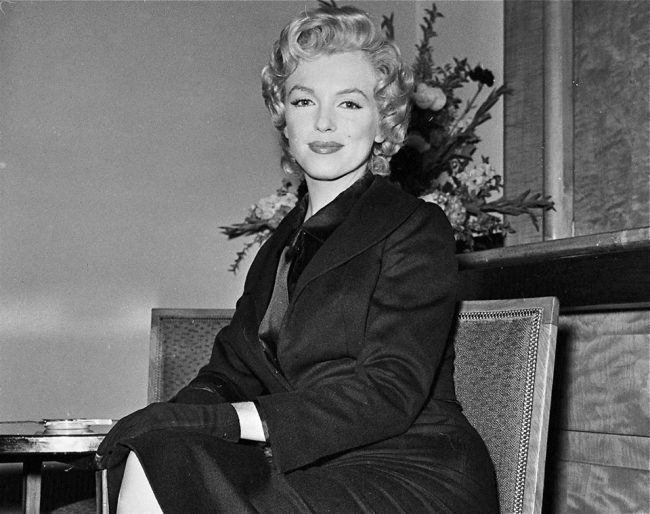
‘Archetype of the American Hero’, Alistair Cooke’s tribute to Gary Cooper, was published in The Guardian after Cooper’s death in May 1961. In this extract from Alistair Cooke at the Movies, Cooke considers how movie stars were then so often dismissed as mere ‘personalities’, and rarely credited with much talent or intelligence.
“It is easy to forget now, as always with artists who have matured a recognisable style, that for at least the first dozen years of his film career Gary Cooper was the lowbrow’s comfort and the highbrow’s butt. However, he lasted long enough, as all great talents do, to weather the four stages of the highbrow treatment: first, he was derided, then ignored, then accepted, then discovered. We had seen this happen many times before; and looking back, one is always shocked to recognise the people it has happened to. Today the intellectual would deny, for example, that Katharine Hepburn was ever anything but a lovely if haggard exotic, with a personal style that might enchant some people and grate on others, but would insist she was at all times what we call a serious talent. This opinion was in fact a highly sophisticated second thought, one which took about a decade to ripen and squelch the memory of Dorothy Parker’s little tribute to Miss Hepburn’s first starring performance on Broadway: ‘Miss Hepburn ran the gamut of human emotions from A to B.’
Marilyn Monroe is a grosser example still. Universally accepted as a candy bar or cream puff, she presented a galling challenge to the intelligentsia when she married Arthur Miller, a very sombre playwright and indubitably un homme serieux. The question arose whether there had been serious miscalculation about a girly calendar that could marry a man who defied the House Un-American Activities Committee. The doubt was decided in Miss Monroe’s favour when she delivered pointed ripostes to dumb questions at a London press conference.”
Gary Cooper was one of many stars who attended a party in Marilyn’s honour at Romanoff’s restaurant in Hollywood, to celebrate her filming The Seven Year Itch in November 1954. He also attended the 1959 Fox luncheon for Soviet premier Nikita Krushchev, where he was seated at Marilyn’s table.
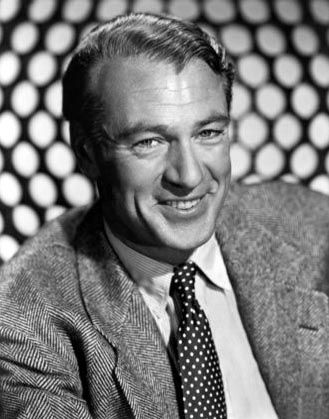
At the auction of Dame Joan Collins’ personal property at Julien’s earlier this month, a June 1960 letter from Cooper to Marilyn was sold for $1,280. Cooper was then in hospital, and thanked Marilyn for sending him roses, expressing his regret at being unable to attend a recent party (possibly her 34th birthday celebrations, on the set of Let’s Make Love.) Click on the picture below to read his letter in full.

This second extract from Alistair Cooke at the Movies focuses on ‘The Script That Got Away: Mr Khruschev’s Propaganda Tour at US Expense’, an article about the Soviet premier’s historic visit, published in The Guardian after Marilyn attended a Twentieth Century-Fox luncheon in Khrushchev’s honour on September 20, 1959.
“He was whizzed so fast over the boulevards between the airport and the Twentieth Century-Fox studio that not one Angelino in a thousand could have guessed, without prior knowledge, that here was the chairman of the Council of Ministers of the Union of Soviet Socialist Republics and not, say, Marilyn Monroe on her way to a dress fitting.
He was shown what any other distinguished tourist would have been allowed to see. He saw the dancing girls of Can Can. He was actually seated at the same table as Gary Cooper, Eddie Fisher, Marilyn Monroe and James Mason. The supreme accolade was reserved for his wife: she was seated next to Frank Sinatra. American hospitality can go no farther.
‘And yet, and yet …’ as the old silent movie captions used to say, the production blew up in the faces of hundreds of skilled politicos, directors and protocol experts who had written it. Nikita Khrushchev, the humble shepherd boy who grew up to play the starring role in the lurid melodrama known to the papers here as ‘The Hangman of Hungary’, retraced his spiritual ancestry and suddenly turned from the home-town boy made good into a frightening ‘baddie’.
He began, with amazing magnanimity, by greeting Spyros Skouras, the president of Twentieth Century-Fox, as ‘a friend and brother before Christ’. He ended by recalling again the futile invasion of his country by soldiers of America, France, Germany, Poland and Britain, by briefly catching himself in an apology for such a tasteless memoir, and then by swelling the veins in his neck in protest at the State Department’s denial of his wish to go down to Anaheim and make a tour of Disneyland…
The movie stars could not have been more uncomfortable if they had been sitting there in nothing but their mascara. Miss Monroe ventured that Mr Khrushchev’s speech ‘was interesting’. Winston Churchill could not have done it better.”
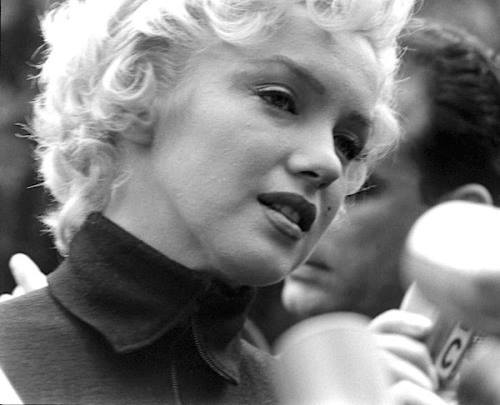
As reported by ES Updates earlier this year, Alistair Cooke at the Movies – an anthology of the eminent British journalist’s writings on Hollywood – is now available via Kindle as well as in print. The book includes two full pieces about Marilyn, and several other references. You can read Cooke’s obituary of Marilyn here.
Cooke’s first thoughts on Marilyn were broadcast on October 14, 1954, on his weekly BBC radio show, Letter From America, regarding her divorce from Joe DiMaggio.
“The Monroe-DiMaggio breakdown is easily dismissed as just another Hollywood marriage. It’s true enough that over twenty, thirty years Hollywood has developed certain mores and customs. And the world jumps to the conclusion that love and marriage in Hollywood constitute something like a religious heresy, a shameless cult mocking the true faith of marriage and children. I have no hesitation in saying that this is mostly moonshine and is brewed from a compound of ignorance and envy…
The gods and goddesses of the Greeks were not known much outside the Mediterranean, and were never seen in the flesh. But the mere announcement of Marilyn Monroe arriving on platform five would cause a riot anywhere in the world. She was mobbed on arriving in Tokyo last year more embarrassingly than she was on leaving San Francisco…
I don’t think there’s been so much talk, from the unlikeliest people, about a movie marriage since the Pickford-Fairbanks idyll as there has been the last fortnight about Marilyn Monroe and Joe DiMaggio. I hope I can get across to you that this marriage, when it suddenly burst upon the world – an elopement naturally – nine months ago, was equally a poetic event … She was a poor girl, an orphan, brought up in an orphanage, and towards the end of the war she was a war-factory worker – a tousled, cheerful, lonely working girl, pretty as a kitten. It is not hard for millions of such girls to identify with her.
So who did Rosie the Riveter marry? She eloped with one of the two or three greatest baseball players there ever have been; nobody but the Yankee Clipper himself … he met Miss Monroe over a plate of spaghetti on a blind date. And they eloped. The perfect fulfilment of two ambitions: the average American boy’s dream of being a baseball hero, and the girl next door’s dream of Hollywood.
So they moved down to Hollywood, and to Joe ‘down’ is the word, not only from his beloved San Francisco, but from any sort of life that made sense to him. He was suddenly surrounded by voice coaches and dancing teachers, and press agents, and telephone calls for publicity stills, for magazine covers, for calendars, for interviews … And the object of all this concern was a wife who worked hard in a calling where you go to bed at nine and get up for work at five in the morning. It was all hopelessly bewildering, and one day Miss Monroe announces, right upstairs, over your puzzled head, that she is going to file for divorce…
I tell you this story in its social outline and leave you to write your own moral. But don’t ascribe it to Hollywood, whose divorce rate is hardly higher than that of Bradford or Kensington. Put it down in an age of television, aeroplanes, publicity and universal movies to the overwhelming conspiracy of fame against two ordinary and engaging young people who pay a rather high price for the only extraordinary thing about them – her prettiness, and his old knack of hitting a ball into the grandstand.”

In January, Marilyn was named as the ‘new face’ of Max Factor cosmetics. Also this month, Joe Franklin (Marilyn’s first biographer) and Anita Ekberg, a fellow blonde bombshell of the fifties, both passed away.
In February, New York Fashion Week included a Fall 2015 collection from Max Mara, inspired by Marilyn’s 1960s style. A hologram of multiple Marilyns appeared in the Oscars opening ceremony. Also this month, Richard Meryman – the last person to interview Marilyn – passed away.

In March, Marilyn was featured in a vintage-inspired ad campaign for Coca Cola. In book news, the long-awaited first volume of Holding A Good Thought For Marilyn, a two-part biography by Stacy Eubank, was published.
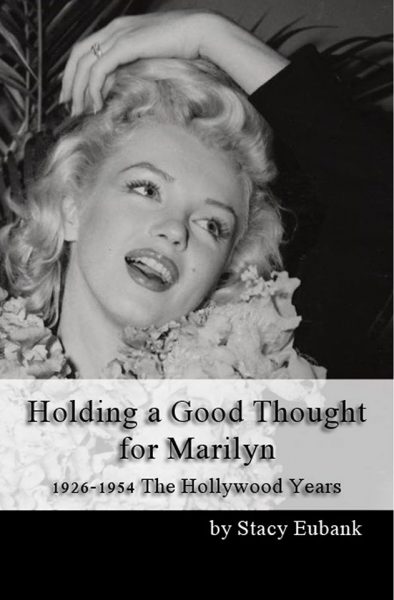
Marilyn Forever, an opera by Gavin Bryars, had its US premiere. And Marilyn: The Strength Behind the Legendary Monroe, showcasing the collection of Ted Stampfer, opened in Liechtenstein.
In April, a viral hoax news story, claiming that a CIA agent had made a deathbed confession to Marilyn’s murder, was debunked. Plans for a monument to Marilyn in South Korea were announced. And in book news, Fan Phenomena: Marilyn Monroe, edited by Marcelline Block, was published.
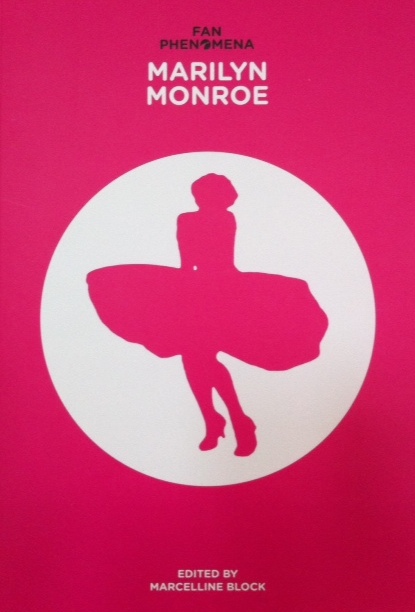
In May, Dr Cyril Wecht – one of the world’s most renowned forensic pathologists – gave an interview to Immortal Marilyn’s Marijane Gray, laying to rest some of the many myths about Marilyn’s death. Marilyn was the subject of two controversial TV shows: Autopsy – The Last Hours of Marilyn Monroe, a documentary; and The Secret Life of Marilyn Monroe, a mini-series based on J. Randy Taraborrelli’s biography, starring Kelli Garner.

On June 1 – Marilyn’s 89th birthday – the British Film Institute launched a month-long retrospective of Marilyn’s movies, and a nationwide reissue of The Misfits. Menswear designer Dries Van Noten used iconic images of Marilyn in his Spring 2016 collection. A benefit performance of Bombshell (the Marilyn-inspired musical subject of TV’s Smash) spurred plans for a full Broadway run. And Marilyn Monroe: Missing Moments, a summer-long exhibit, opened at the Hollywood Museum.

On June 29, Julien’s Auctions held a Hollywood Legends sale dedicated to Marilyn, and her floral dress from Something’s Got to Give sold for over $300,000. Sadly, it was also reported that the ‘Dougherty House’ in North Hollywood, where Marilyn lived from 1944-45, has been demolished – despite protests from local residents. And George Winslow, the former child actor who appeared in Gentlemen Prefer Blondes, passed away.

In July, Before Marilyn: The Blue Book Modelling Years, a new book by Michelle Morgan, was published. Limited Runs launched the Red Velvet Collection, a US touring exhibition featuring Tom Kelley’s famous nude calendar shots of Marilyn, as well as rare photos by Gene Lester. In Los Angeles, the Andrew Weiss Gallery launched their own exhibition, Marilyn: The Making of a Legend, and published a catalogue, 17 Years.

In August, the Marilyn Remembered fan club’s annual memorial service was held at Westwood Memorial Park, marking the 53rd anniversary of Marilyn’s death. It was reported that hip hop producer Timbaland would sample ‘Down Boy’, a ‘lost’ song recorded by Marilyn for Gentlemen Prefer Blondes. And the Daily Express published rare photos of a young Marilyn in Salinas.
In September, a large number of rare candid shots of Marilyn were auctioned by Profiles in History. A new exhibition, Becoming Jewish: Warhol’s Liz and Marilyn, opened in New York. And Norman Farberow, the psychologist who contributed to the first official report on Marilyn’s death in 1962 , passed away.
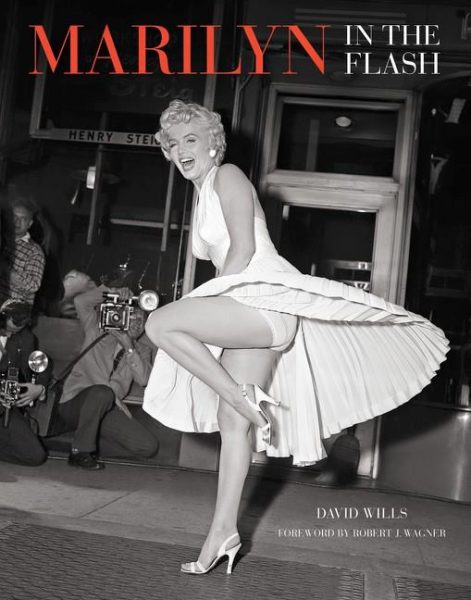
In October, Marilyn – in the Flash, David Wills’ stunning sequel to MM: Metamorphosis, was published. Members of Everlasting Star discovered rare photos of an early public appearance by Marilyn at the Hollywood Legion Stadium in 1947. October also marked Arthur Miller’s centenary, and the death of movie legend Maureen O’Hara.
In November, Marilyn’s blue gabardine suit from Gentlemen Prefer Blondes was sold at Bonham’s for $425,000. Congressman Tony Cardenas introduced a bill to rename a Van Nuys post office after Marilyn. Cartier unveiled a new ad, featuring a diamond-themed homage to Marilyn. And the Writers’ Guild of America voted Some Like it Hot as the second funniest screenplay of all time.
And finally … in December, Marilyn-related items from the collection of Dame Joan Collins were sold at Julien’s Auctions, and Ferragamo launched a capsule collection featuring a Marilyn-inspired shoe. Over in Toronto, the TIFF Cinematheque launched a season of movies starring Marilyn and her greatest Hollywood rival, Elizabeth Taylor.
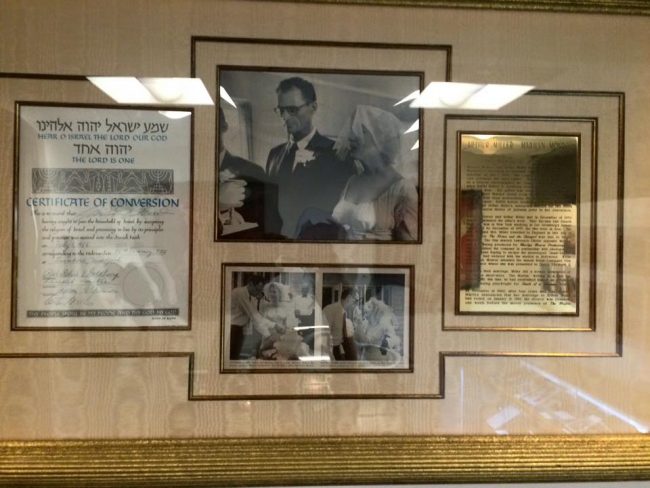
The personal archive of actress Joan Collins – including a number of Marilyn-related items – was auctioned by Julien’s yesterday, with Marilyn’s signed Conversion to Judaism certificate sold for $70,400, and a metal cast of MM’s hand and foot prints from Grauman’s reaching $57, 600.
La Collins met Marilyn when she was signed to Twentieth Century-Fox in 1954, winning the lead in The Girl in the Red Velvet Swing after MM rejected it. The two women can be seen sitting separately in an audience photo from a preview of There’s No Business Like Show Business.
It’s fair to say Joan is one of Marilyn’s most famous fans (though it must also be noted that her stories about MM have grown more colourful over the years!)
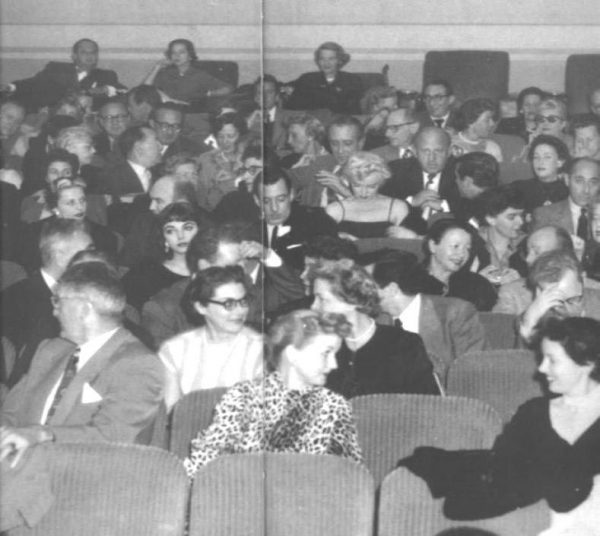
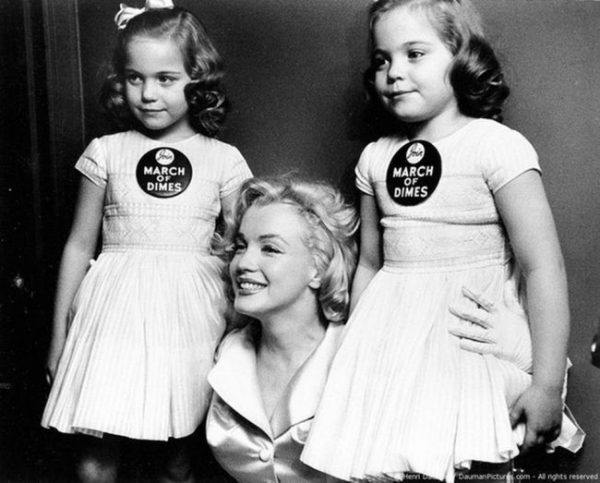
Time has published an article about photographer Henri Dauman, whose work graced the pages of Life, Newsweek and the New York Times. Dauman photographed Marilyn at several public events during the late 1950s, mostly in New York. Self-taught, and inspired by cinema, Dauman escaped the holocaust and was orphaned at 13, fleeing France for America. A documentary, Henri Dauman: Looking Up, is currently in the fundraising stage.
